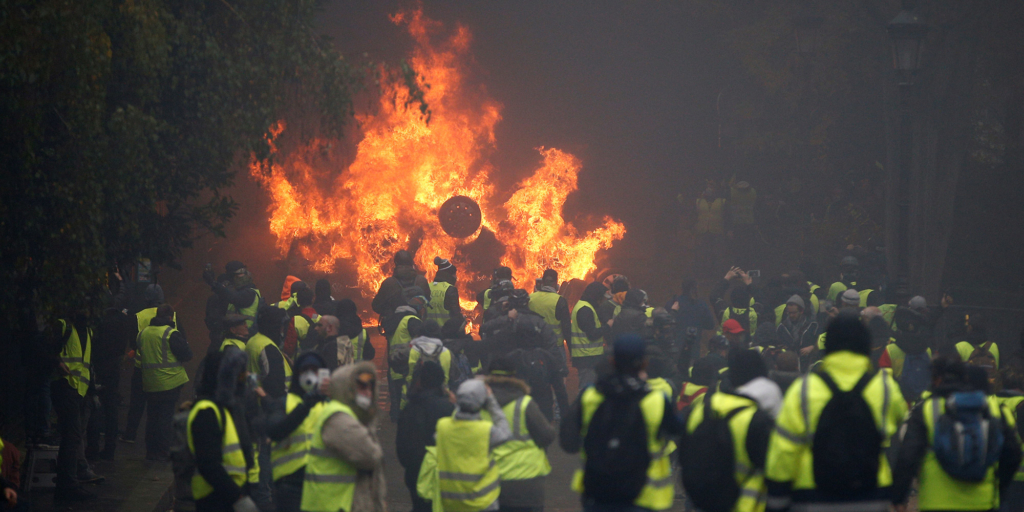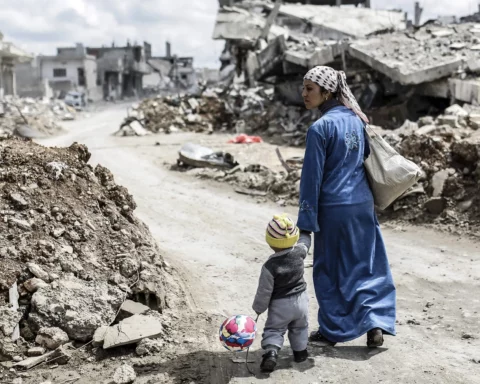L’eau Est La Vie camp is a floating pipeline resistance camp. Although we have no leaders, we value the voices of our indigenous, black, femme, and two spirit organizers. We fight in the bayous of Louisiana, Chata Houma Chittimacha Atakapaw territory, to stop the Bayou Bridge Pipeline, an Energy Transfer Partners project and the tail end of the Dakota Access Pipeline.
BBP resistance is a continuation of our fight in Standing Rock, and furthermore a continuation of the centuries old fight to protect sacred stolen territory. But unlike the NoDAPL sacred fight, this camp must be smaller and more vetted, because of the fragile ecosystem, the surveillance, and the sacred wishes of the people of this land.
If you are interested in stopping the Bayou Bridge Pipeline, make plans to come to Louisiana NOW.
Because of the urgency of the situation, we are pausing the application process to join Camp and instead are asking all protectors to come to Camp as soon as possible. Please email us at resist@nobbp.org with your name, phone number, why you want to come to camp, when you will be arriving and how long you plan on staying. We will respond with the directions to camp and what to bring.
** Please note that if show up to camp without emailing us first and without receiving an email invitation, you will not be allowed to enter camp. **
In the face of ETP’s escalated tactics, for 38 consecutive days we disrupted and stopped construction in the Atchafalaya Basin on the water, on the ground and in the air. The more protectors here on the ground, the more we can stop construction.
Join us.
CLICK HERE TO EMAIL US NOW
______________________________
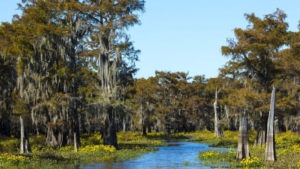
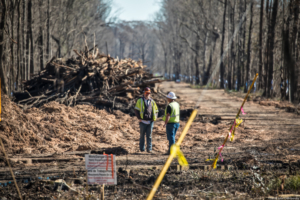
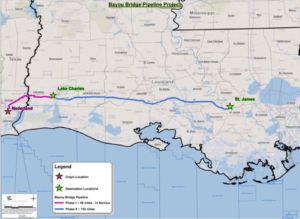
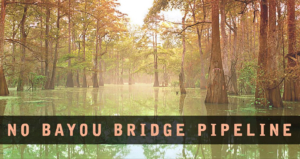
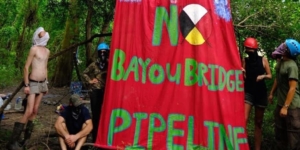
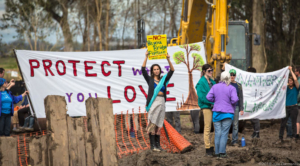
The Bayou Bridge Pipeline is the final stage of a scheme to bring fracked-oil from the Bakken region of North Dakota to export facilities in Louisiana. Construction on the pipeline is under way, but frontline communities are resisting. This resistance is being led by the L’eau Est La Vie Camp. More about the Bayou Bridge Pipeline from NoBBP.org:
Energy Transfer Partners (ETP), the very same company behind the notorious Dakota Access Pipeline (DAPL) , is trying to build a 162 mile crude oil pipeline across Louisiana called the Bayou Bridge Pipeline (BBP). BBP will pollute our water,crossing an astounding 700 bodies of water including Bayou LaFourche, a critical reservoir that supplies the United Houma Nation and 300,000 Louisiana residents with clean, safe drinking water. BBP violates indigenous sovereignty.Along its path of destruction, BBP would impact sacred mounds and threaten drinking water of the United Houma Nation, a tribe that has been seeking federal recognition for decades. Neither the United Houma Nation nor any tribe of the gulf south has been consulted nor given consent for the construction of this pipeline. BBP will destroy our coast. Wetlands are sponges for floodwaters. The BBP will destroy 150 acres of wetlands in its path and will “temporarily” impact 450 more acres. Wetlands are vital to a resilient Southern Louisiana, and already because of climate change and development, Louisiana is losing an average of one acre of coastal wetlands per hour. The State of Louisiana is frantically trying to figure out how to save our coast, but building the BBP will make the situation worse. BBP will destroy our economy.Existing oil pipelines have already created enormous problems for our crawfishing industry. BBP will only make these problems worse, creating dams in the Atchafalaya Basin dozens of miles long that irreparably damage the ecosystem and make fishing for crawfish impossible. The crawfishing industry supports thousands of good jobs in Louisiana. BBP will only create 12 permanent jobs. BBP will increase flooding. The loss of wetlands also means increased flooding. When flooding is worse, our communities suffer. Our homes our damaged, our crops are destroyed, our infrastructure is eroded, our families get sick, and our economy is harmed. BBP is a climate disaster. It will create the carbon equivalent of 30 new coal plants. The BBP is not compatible with our global mandate to limit climate change to 1.5℃. Our growing network of impacted landowners, tribal members, environmental justice communities, and fisherfolk have submitted comments, spoken out at hearings, and demanded proper environmental reviews and that our concerns will be taken seriously. None of this has happened. ETP has swindled landowners, bought our politicians, and refused to address any of the community’s needs. Enough is enough. If our leaders won’t stand up to stop this pipeline and protect our water, then we the people of Louisiana will. We are building the L’eau Est La Vie camp to protect our water and our way of life from the Bayou Bridge pipeline.
The No Bayou Bridge solidarity campaign takes its leadership from the frontline, indigenous and POC led resistance to the Bayou Bridge Pipeline. We are committed to supporting this frontline resistance until the Bayou Bridge pipeline is defeated.
Please feel free to contact the solidarity campaign with any questions, or if you need any support organizing an event or action: actions@nobayoubridge.global.
source: https://www.nobayoubridge.global/about/
_______________________
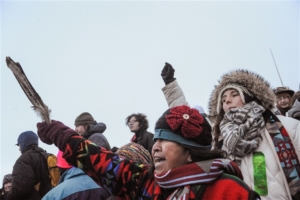
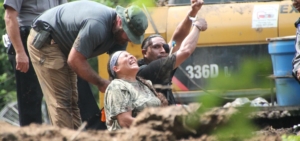
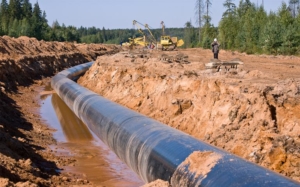
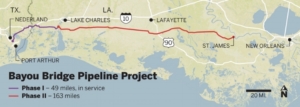
The Bayou Bridge Pipeline (BBP) would impact numerous communities across Southern Louisiana. The pipeline would lead to more fracking for oil in the shale fields of North Dakota and further the global dependence on climate change-causing fossil fuels.
The oil moving through the Bayou Bridge Pipeline will come from North Dakota via the Dakota Access pipeline before connecting with another pipeline that heads south. Ultimately the oil that will be shipped through BPP will be exported overseas.
There are a host of concerns about BBP and reasons why it must not be built. Some of these concerns are detailed below:
- Threats to Wetlands and the Environment
- Threat to Bayou Lafourche Drinking Water
- Public Interest and Safety Concerns
- Environmental Justice issues in St. James
Threats to Wetlands and the Environment
The Bayou Bridge Pipeline presents a significant threat to Louisiana’s invaluable and treasured wetlands. This 162-mile long crude-oil pipeline will cross the largest contiguous wetland area in the country, permanently destroying some 150 acres of forested wetlands in its path and “temporarily” impacting more than 450 acres of wetlands. Moreover, the proposed pipeline’s 75-foot buffer along the right-of-way will permanently destroy 940 acres of wetlands.
The Atchafalaya Basin contains the largest contiguous bottomland hardwood forest in North America. The largest river swamp in North America, and one of the most productive wetlands in the world, the Basin’s 885,000 acres of forested wetlands provide habitat for an expansive array of mammals, fishes and amphibians. Situated at the mouth of North America’s most important flyway, the Basin supports half of America’s migratory waterfowl (more than 300 bird species), and provides the most important habitat for neotropical migratory land birds in the Western Hemisphere. The proposed pipeline will contribute to the existing harm left behind by oil and gas activities in the Basin. In addition to concerns regarding spills and malfunctions of the pipeline, the installation of the pipeline as proposed presents significant harm to the invaluable wetland ecosystem of the Atchafalaya Basin.
Prior backfilling activities in the Atchafalaya Basin along the very same right-of-way that Bayou Bridge Pipeline proposes to use have drastically reduced the environmental integrity of the Basin. Previous pipeline projects through the Basin have left spoil banks of dredged material adjacent to the pipelines, dramatically altering water flow and sedimentation patterns along the pipeline routes, impairing water quality, negatively impacting wildlife habitat and disrupting local crawfishing communities. The spoil bank runs along the pipelines on an east-west trajectory and diverts and impedes the natural north-to-south water flow, altering the direction to an east-west flow pattern. Because the water is laden with sediment, the change in the natural flow creates sedimentation along the spoil banks, which further impairs the north-to-south flow of the water. If BBP is authorized to install its pipeline into existing spoil banks it will be authorized to permanently impair water flow, making it impossible to restore the Basin to its natural hydrology. Prior to authorizing installation of any additional pipelines in the Basin, regulators must require pipeline companies, including BBP’s majority owner Energy Transfer Partners, to restore the rights-of-way for existing, out-of-compliance pipelines for which these companies are responsible.
Finally, as the state will likely continue to experience frequent flood events, the value of the wetlands for flood attenuation should not be underestimated. Reducing flood storage throughout Acadiana by filling wetlands and constraining north-south flow with a pipeline right-of-way aggravates flooding issues. The Atchafalaya Basin is critically important for flood control, yet the ability of the Basin to move flood waters is severely diminished due to the increase in accretion of sediment in the Basin floodway. Pipeline canals, illegal spoil banks and the lack of enforcement of the terms of pipeline construction permits greatly contribute to the accretion process in the Basin. It is critically important for the sustainability of the Basin floodway that pipeline canals are brought back into compliance before any new permits are granted to use the rights-of-way.
Threat to Bayou Lafourche Drinking Water
Bayou Lafourche is the sourceof drinking water for 300,000 people, including the United Houma Nation and residents in Ascension, Assumption, Terrebonne, and Lafourche Parishes. Consolidated Water District No. 1 which provides water to residents in Terrebonne and Lafourche Parish is becoming increasingly dependent on Bayou Lafourche to provide 80% of its water supply (approximately 4 billion gallons per year).
Bayou Lafourche has also historically counteracted subsidence in the area by introducing fresh water, sediments, and nutrients from the Mississippi River. To counteract coastal land loss, Louisiana’s Coastal Wetlands Conservation and Restoration Task Force has been working since 2015 on a project of year-round pumping and siphoning to divert more water into Bayou Lafourche near Donaldsonville, in addition to bank stabilization and dredging.
The Bayou Bridge Pipeline will carry fracked crude oil of various viscosity through a 160 mile stretch of Louisiana, including 54 miles of the Louisiana Coastal Zone. The pipeline could transport up to 13,000 gallons of crude oil per minute when operating at full capacity. In 2016, Bayou Bridge Pipeline, LLC. (a company of Energy Transfer Partners), applied to the Bayou Lafourche Fresh Water District (BLFWD) for a permit to run a 24-in crude oil pipeline 40ft underneath Bayou Lafourche for a distance of 129ft. In October 2016, the BLFWD unanimously approved the permit without discussion.
Things to Know about the Bayou Bridge Pipeline Impact on Bayou Lafourche
Inconsistent – The Bayou Bridge Pipeline (BBP) is placed only 40ft deep which is inconsistent with the standard depth in other areas in Louisiana and other projects.
-
- Bayou Bridge will pass 170 feet underneath the West Atchafalaya Guide Levee and 140 feet underneath the East Guide Levee.
- If the pipeline met the safety standard of 140 feet below the ground for Bayou Lafourche, the projected risk for Bayou Lafourche would be lowered.
- The basic drinking water needs and coastal protection value of Bayou Lafourche is just as important as in any other area in Louisiana and should therefore receive the same or greater protective standard – i.e. at least 170 feet underneath Bayou Lafourche.
Unrealistic – The proposed BBP crosses underneath Bayou Lafourche in Louisiana’s Coastal Zone, but the depth does not account for Louisiana’s expected coastal land loss
- Louisiana’s coast is eroding at an alarming rate: 25-35 square miles of land are lost every year due to land subsidence and rising sea levels. According to a study done by Louisiana State University and the Rand Corporation, more than 610 miles of pipeline statewide could be exposed over the next 25 years. The Bayou Bridge Pipeline along with other pipelines in the state will not be exempt from the effects of sea level rise, sinking land, and coastal degradation as the land in Louisiana keeps disappearing.
- With coastal land loss, sections of the pipeline along the coast, such as the section under Bayou Lafourche, should be placed even deeper than elsewhere in Louisiana in order to account for the risk of future exposure.
Dangerous to Public Health – The 40ft proximity of the pipe to drinking water makes it more likely that a leak from the pipeline could contaminate Bayou Lafourche.
Serious contamination could include:
-
- If there is a breach in the pipe under Bayou Lafourche, up to 13,000 gallons of crude oil per minute could contaminate the water
- Bayou Bridge Pipeline, LLC claims that BBP will use “state of the art technology” and is safe due the fact that “most pipeline incidents are the result of ‘older, unregulated pipelines’”. However, all pipelines have the potential to fail, even newer and more “technologically sound” ones. Parent company Energy Transfer Partners and its various subsidiaries have been involved in at least six pipeline ruptures or injurious safety violations since 2012. One such incident, on October 21st 2016, spilled an estimated 55,000 gallons of gasoline into Wallis Run, PA, a river that feeds the Susquehanna River. The Permian Express II, Energy Transfer’s crude oil pipeline constructed in 2016, had to be shut down in September after a failure that released 33,600 gallons of crude oil near Sweetwater, TX.
- Energy Transfer’s BBP is made of the same technology as their pipelines that have failed elsewhere: a 24-in crude oil pipeline with 0.406-inch wall thickness, coated in Fusion bonded epoxy coating (FBE) that was constructed in 2014. These pipelines have proven that they can fail, even with the most technologically sound pipes.
- Furthermore, the “state of the art technology” used in this particular pipeline still has the potential to leak and contaminate. According to the GeoEngineers technical memorandum, it is stated that the pipeline’s leak detection system can shut down pumping of oil within three minutes of the problem. However, with the pipeline’s ability to pump an upwards of 446,000 barrels of oil a day, 13,000 gallons of crude oil per minute, and a moderate leak estimate of only 1%, that still leaves potentially 390 gallons of crude oil released in that three-minute time frame. Even with this conservative estimate, there is still a very real threat to the people of Bayou Lafourche and their drinking water supply. Despite BBP’s emphasis on the relative safety of the permitted pipeline, malfunctions at newly constructed and operating pipelines, still happen and have disastrous consequences.
Public Interest and Safety Concerns
Bayou Bridge Pipeline (BBP) contends that its proposed 162-mile long crude oil pipeline is in the public interest. The company asserts that the pipeline will support energy independence, increase employment opportunities and add to manufacturing sectors. Touted as a $670 million investment, the project is advertised as contributing significant funds to the local, regional and national economies and workforce through construction jobs and spending on materials for construction. However, BBP fails to take into account the true costs of its proposed pipeline in the form of environmental degradation, impacts to local industry and costs to communities in the event of pipeline spills, leaks or other incidents.
First, the impacts to valuable wetlands will be significant and detrimental. An estimated 150 acres of wetlands will be permanently destroyed and some 450 acres “temporarily” impacted. What BBP neglects to consider is that the pipeline will have to be placed inside illegal spoil banks existing along the proposed right of way, making it impossible to restore and resulting in permanent impacts to thousands of acres of wetlands. In addition to the plethora of wildlife habitat at risk, the culture and livelihood of communities dependent on these wetlands likewise face harm. The existing labyrinth of piled-up, dredged spoil from prior pipelines has already contributed to increased water stagnation and impaired water quality, which has devastated the local Cajun crawfishing community. Reliant on the wetlands of the Atchafalaya Basin, this community has experienced first-hand the ills of sloppy pipeline construction and failed enforcement. BBP’s owners, Sunoco Logistics and Energy Transfer Partners, are responsible for some of the existing harms and authorizing this new project will permanently transform the Basin’s landscape, devaluing the crawfishing industry that this local community relies upon.
Second, the terminus of the pipeline will be in St. James where a local community already faces a frightening industrial network of storage tanks and chemical facilities that threaten their health, property values and culture.
Finally, all communities, towns and wildlife in the path of the pipeline face significant threats of pipeline failures, leaks, malfunctions and major spills. Despite the many assurances by BBP that its pipelines are constructed using “state of the art technology” and in consideration of spill prevention systems and response capacity, history tells us that spills happen and response readiness ignores the harm of the occurrence of a spill in the first place. Considering the loss to impacted communities and ecosystems, coupled with the costs of clean-up, BBP’s account for the “public interest” is severely overestimated.
BBP is a joint venture of Energy Transfer Partners and Sunoco Logistics, two companies with one of the worst spill records in the nation responsible for 317 pipeline incidents in the past 11 years (an average of 28 per year). Sunoco Logistics (“Sunoco”) and Energy Transfer Company (“Energy Transfer”) together operate 9,162 miles of hazardous liquid (i.e. crude oil) and gas pipelines. According to the Pipeline and Hazardous Materials Safety Administration (PHMSA) Sunoco and Energy Transfer had 317 pipeline incidents from 2006 to April 18, 2017, causing $64,328,190 in property damage.
From 2006 through September 2013 alone, Sunoco:
- Paid $1.2 million in penalties for safety issues.
- Caused property damage costing almost $42 million.
- Spilled 16,075 barrels of hazardous liquids, over half of which was never recovered.
From 2006 through October 2016, ETP:
- Caused property damage costing $ 9.67 million, but paid only $24,400 in penalties.
- Spilled 9,577 barrels of hazardous liquids with only 30 barrels recovered and 99.6% remaining in the environment.
More recently, ETP’s Rover natural gas pipeline spilled over 2 million gallons of drilling lubricant in 2 separate pristine Ohio wetlands, which smothered fish, insects and other wildlife.Ohio EPA has fined them $431.000 for multiple air and water pollution violations resulting from the spill. On May 10, the Federal Energy Regulatory Commission (FERC) ordered Rover to cease new drilling until environmental concerns are adequately addressed.
BBP presents the following imbalanced interests: on the one hand, unidentified and uncertain economic gain; and on the other hand, the concrete and quantifiable risks to human health and safety and destruction of wetlands, which are recognized by Congress, the Corps and EPA as valuable public resources that are vital to recreational, environmental and aesthetic integrity of Southern Louisiana. When faced with the true costs of this project, BBP is undoubtedly not in the public interest of the communities in its path.
Environmental Justice issues in St. James
The proposed Bayou Bridge Pipeline is an environmental justice threat to the community of District 5 in St. James parish. Environmental injustice refers to the siting and expansion of unwanted hazardous waste facilities in low income communities and communities of color and the associated threats to health and human safety that these communities disproportionately shoulder. The proposed Bayou Bridge pipeline would carry fracked crude oil 160 miles across Louisiana, impacting more than 600 acres of wetlands and 700 bodies of water. The pipeline would end at at a terminal in St. James parish, a community of color already saturated with oil and gas facilities. The proposed pipeline would carry up to 13,000 gallons of crude oil per minute through the parish. At the end of the main pipeline, a second lateral pipeline 1.12 miles long would begin. This creates an increased risk of hazard within a community already facing unreasonable risk. The particular community of Burton Road experiences additional vulnerability to disaster as they lack adequate evacuation resources and access. The siting of the terminal within St. James parish and lack of evacuation plan in the case of an emergency exacerbates the environmental justice issue in St. James. Members of the community are opposed to the pipeline’s siting within their already “full” community where they already suffer the negative affects oil and gas facilities and infrastructure.
Burdens a disproportionate overburdened population
First, the St. James community is home to an especially vulnerable population. Environmental justice concerns the unnecessary risk born by vulnerable communities, especially low income, minority or the elderly. Over 20% of people in St. James District 5 live below the poverty . The neighborhood along Burton Road is a majority-black community of mostly elderly residents. The residents above the age of 50 have limited physical mobility, making evacuation in a disaster event especially difficult. All of these factors limit the political power of the community to oppose a pipeline that is not in their best interest.
Exacerbates existing unmet public health concerns
Second, the community currently faces unreasonable risks to the health its residents. The proposed Bayou Bridge pipeline will only increase health concerns. The Burton Street community lies between the Nustar, Capline and Marathon facilities. The community has been hurt by the excessive health risks associated with living near hazardous facilities. Residents report losing unusually high numbers of community members to respiratory failure and cancer. Beyond increased numbers of cancer and respiratory illnesses, the residents of this neighborhood experience bad allergies, evening smells, visibly oily water and headaches when it rains. Further, when incidents that further jeopardize the health of the community do occur, they are not adequately informed. In March 2017, Plains Pipeline reported an oil spill of more than 12,000 gallons into the local ditches. Marathon then reported of hundreds of gallons on its property miles north of the Plains Pipeline leak. Residents of the community were not informed and unknowingly continued to breath the hazardous emissions from oily waters surrounding their homes. The two square miles south of Burton Lane have the highest density of accidents (34) in the PHMSA database for the state of Louisiana. Existing facilities have released tens of thousands of gallons into local drainage. Major releases have happened twice a year since 2009 This the disproportionate rate of incidents and the lack of communication by local facilities exemplifies the burden already placed on this community. Adding another pipeline would only increase the risk of an accident in St. James
Inadequate emergency plan for a frontline community
The community is under undue safety risk, a problem intensified by the extremely limited ability to evacuate in the case of a disaster event. Increased pipeline and rail infrastructure and private ownership of surrounding lands by industry has limited access to Burton Road down The community currently has only one road of access in or out from Burton Street to Highway 3172. This currently leads to access problems for emergency vehicles. The added mobility problems faced by residents of the neighborhood leads to fears that in an emergency event wheelchair bound citizens would not be The Proposed Bayou Bridge pipeline will further hinder access by medical personnel and evacuation routes as the pipeline is planned to pass directly under Burton Road. At the community meeting in march where residents voiced their opposition to the pipeline, one resident shared a particular instance where during a heart attack emergency vehicles were delayed for an hour waiting for a fence at a neighboring facility to be opened. An incident of any kind with the pipeline under that road or any construction activity would totally block the only evacuation route for the neighborhood. The increased health risks associated with the hazardous facilities surrounding the community is severely exacerbated by the limited access of emergency vehicles to residents that need additional health services.
The burden of these health and safety concerns falls disproportionately on this particular community, but they will not receive the benefits of the proposed pipeline. The community of District 5 remains encircled by oil storage and transportation infrastructure while the majority white community on the other side of the river was bought out and relocated. The $670-million-dollar investment is framed as a boost to local Louisiana economies from twelve construction jobs and spending on construction materials. There is no concrete evidence that any of these economic benefits will be felt in the community. The private benefits of the pipeline for the company and its investors are even further removed from the residents of St. James. While these benefits of the pipeline will not be felt in this parish, the increased burden of the hazard of leaks and spills in a community already facing uncommonly frequent incidences of accidents and health problems will be felt directly in St. James.
While this pipeline represents a multi-faceted threat to the state, the specific demographic vulnerabilities and current hazards in the community of District 5 in St. James parish as well as their opposition to the citing of the pipeline in their community creates an environmental justice issue. The current saturation of hazardous storage facilities and transportation infrastructure surrounding Burton Road, Freetown Paul Nelson Rd. and the resulting increased risks to health and safety already characterize environmental injustice, and the additional vulnerabilities that this pipeline would impose exacerbate the issue. The members of St. James are being asked to bear the risks of an additional pipeline in their district, and yet do not receive any benefits from the project. Further, the lack of attention by the company to the evacuation difficulties and health impacts to this low income and minority community created by the project reflect a lack of concern for the environmental injustice impacts of the project.
source: http://nobbp.org/about/bayou-bridge-pipeline/
_________________________________________________
Statement from the Indigenous Environmental Network:
“L’eau est La Vie camp is opening in resistance to the Bayou Bridge Pipeline (BBP) another Energy Transfer Partners project. BBP is the tail end of the Dakota Access Pipeline that weaves from the Bakken to the fragile wetlands of Southern Louisiana. Once again Indigenous communities are being put in harm’s way and over 700 bodies of water will be threatened by one of the worst environmental offenders known to date. We stand with the Water Protectors here in southern Louisiana to protect these critical wetlands that serve as protection for the people of this region from floods and storms.”
source: http://indigenousrising.org/
____________________
L’EAU EST LA VIE: THE FIGHT AT STANDING ROCK CONTINUES IN THE BAYOUS OF LOUISIANA
from Sam Vinal- Mutual Aid Media on Vimeo.
Energy Transfer Partners—the company behind the Dakota Access Pipeline at Standing Rock—is trying to extend that pipeline through the largest US wetland swamp in Louisiana, the Atchafalaya Basin.
L’Eau Est La Vie (Water is Life) Camp is fighting the pipeline despite facing state violence, police that are moonlighting for the pipeline and courts that are protecting corporate interests over public good. The fight for water and life continues!
“If our leaders won’t stand up to stop this pipeline and protect our water, then we the people of Louisiana will. We are building the L’eau Est La Vie camp to protect our water and our way of life from the Bayou Bridge pipeline.”
-L’eau Est La Vie Statement
To Learn More: nobbp.org
Support the Camp: gofundme.com/nobbp




